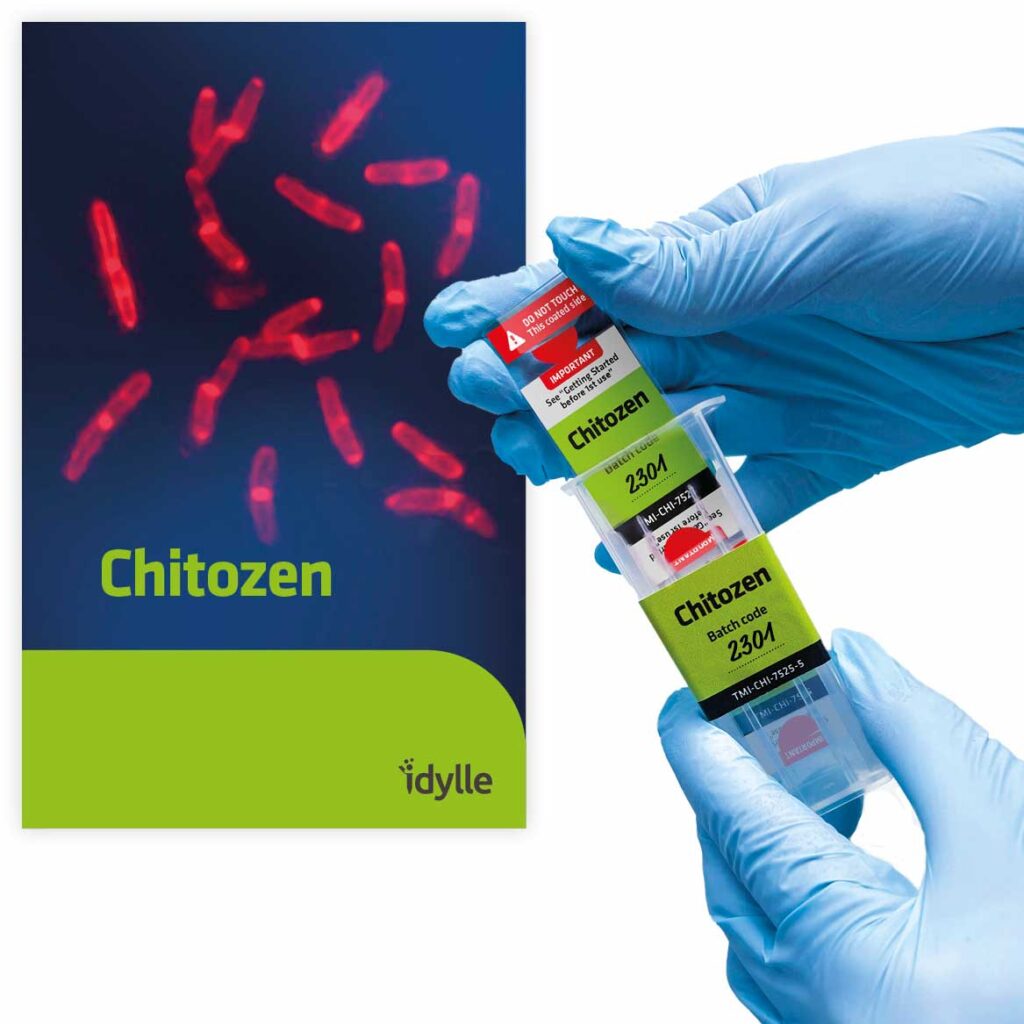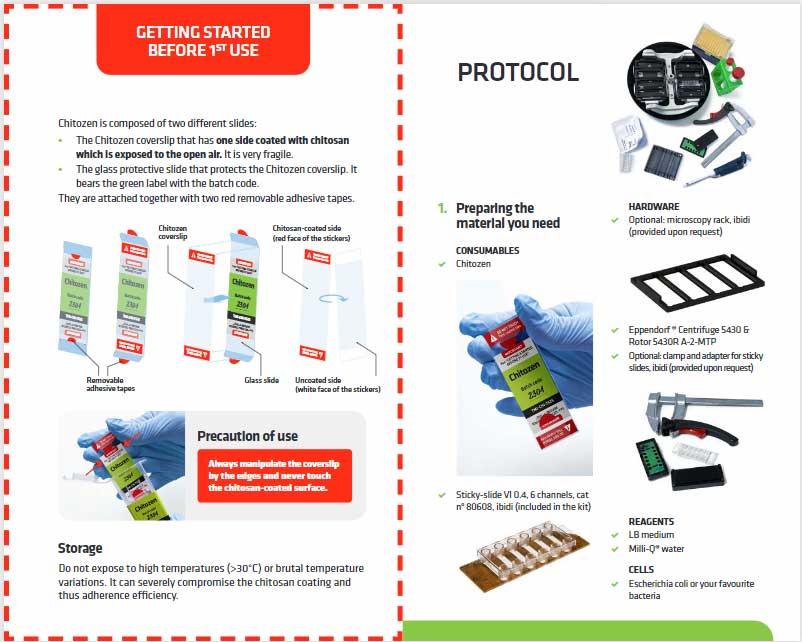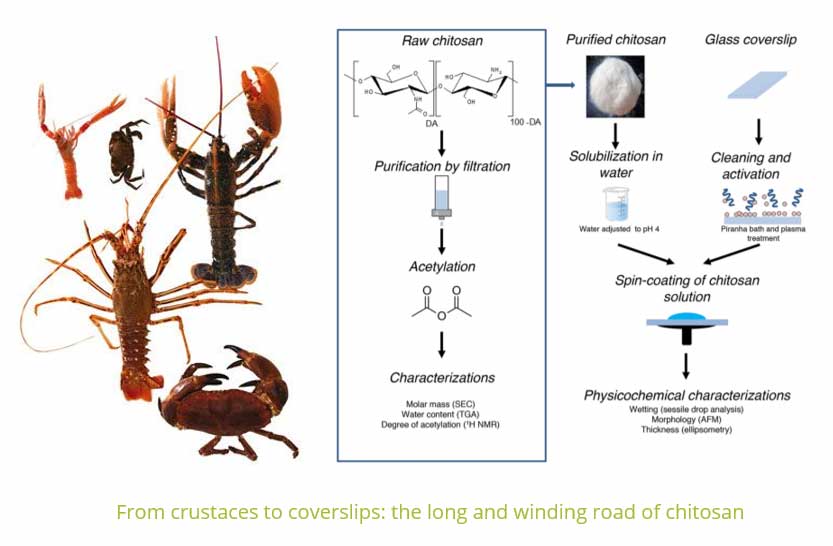Now you can you study cell behavior under confinement
Just released by Idylle, AgarSqueezer helps confine your adherent and non-adherent cells and study their behavior within a physiological rigidity range.
The 1st functionalized microscope slide for imaging live bacterial cells and studying their growth has been tested and approved by researchers in a Test Program. What we learned from them is remarkable.
Chitozen is a chitosan-coated coverslip compatible with 6-channel sticky slides. It is an innovation to leverage for researchers who want to image bacteria both still and alive under the microscope. Or to perform long-term imaging of bacteria. Even if they want to change the growth condition (e.g. antibiotics, chemicals, inhibitors) during the experiment and directly observe, in real-time, the bacteria new comportment under the microscope.
At Idylle, all the innovations we produce first go through a Test Program. What is that? It is a 4-week program that brings together the first users of a product who test it under various experimental conditions and who give us their feedback. This approach contributes to the continuous improvement of the tools that we publish. It can for example confirm or invalidate a new experimental use hypothesis. Or reveal unexpected results. In any case, we learn something and share it for the benefit of the entire scientific community of users.
The Chitozen Test Program ended in Q4 2022 and we warmly thank the 75 researchers who successfully used Chitozen to image their own bacteria model for their own workflow.

Chitozen was a fantastic example of how embarking in a Test Program is an opportunity to try out emerging technologies and directly participate to the improvement of its protocol or production line. And if you’ve bought it recently, please keep sharing your feedback well. We are always willing to improve the experience of the community with the Idylle innovations!


Chitosan is a polysacharide composed of randomly distributed D-glucosamine and N-acetyl-D-glucosamine. It can be synthesized from chitin extracted from carapaces.
It can almost link the capsule of bacteria, immobilizing them via a variety of weak interactions. The chitosan Idylle uses to coat the coverslips has a well-controlled degree of acetylation. The molecular structure and thickness of the coating is optimal for the adhesion of various bacteria (Escherichia coli, Klebsiella pneumoniae…)
The preparation of the Chitozen coverslips allows an homegeneous distribution of the chitosan on the surface and maximisation of the surface of use.

… Tâm Mignot, Olivier Theodoly, Amandine Desorme, Guillaume Sudre and Laurent David decided they wanted to understand how their bacteria, Myxococcus xanthus, moves on a surface. They tried to design a smart microscopy system to observe it, but there was a problem: the Myxococcus cells were not adhering to their glass slides. Until that day when they read a paper on the way people use chitosan to get their bacteria better move on plates. They got an idea: what if they could coat their glass slides with some chitosan? No sooner said than done. They tested it. And it worked! They implemented their prototype with a microfluidics system to test the real-time response of their bacteria to antibiotics. They published it in 2019 in mBio and decided to partner with Idylle to transfer it to the scientific community. At Idylle, we were impressed by the fact that they had managed to use chitosan-coated coverslips to promote the growth of cells without any deleterious effect on their physiology, allowing them to measure the antibiotic susceptibility of a diversity of clinical strains with an excellent accuracy in a very short period of time. We loved that and decided to collaborate to transfer it. Chitozen was released in 2022 through a 1st campaign of Test Program, and is now available for all.

We gladly support you by keeping you updated on our latest products and the developments around our services.